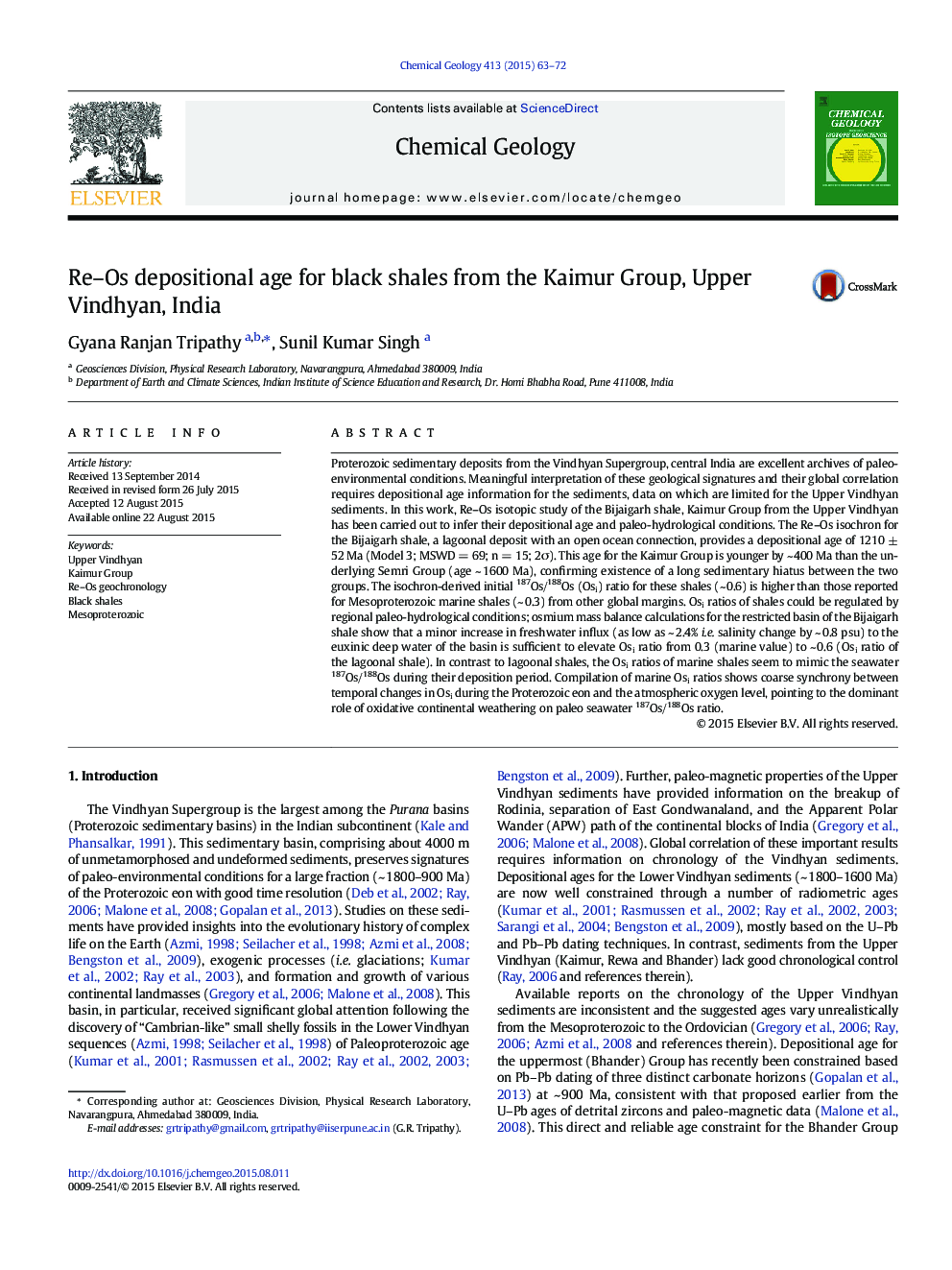| کد مقاله | کد نشریه | سال انتشار | مقاله انگلیسی | نسخه تمام متن |
|---|---|---|---|---|
| 4698467 | 1637561 | 2015 | 10 صفحه PDF | دانلود رایگان |
• Re–Os age of the Bijaigarh shale, Kaimur Group is 1210 ± 52 Ma.
• This age for the Kaimur Group is ~ 400 Ma younger than the underlying Semri Group.
• Paleo-hydrology controls the initial 187Os/188Os of shales from a restricted basin.
• 187Os/188Os ratios of marine shale show coarse synchrony with atmospheric O2 level.
Proterozoic sedimentary deposits from the Vindhyan Supergroup, central India are excellent archives of paleo-environmental conditions. Meaningful interpretation of these geological signatures and their global correlation requires depositional age information for the sediments, data on which are limited for the Upper Vindhyan sediments. In this work, Re–Os isotopic study of the Bijaigarh shale, Kaimur Group from the Upper Vindhyan has been carried out to infer their depositional age and paleo-hydrological conditions. The Re–Os isochron for the Bijaigarh shale, a lagoonal deposit with an open ocean connection, provides a depositional age of 1210 ± 52 Ma (Model 3; MSWD = 69; n = 15; 2σ). This age for the Kaimur Group is younger by ~ 400 Ma than the underlying Semri Group (age ~ 1600 Ma), confirming existence of a long sedimentary hiatus between the two groups. The isochron-derived initial 187Os/188Os (Osi) ratio for these shales (~ 0.6) is higher than those reported for Mesoproterozoic marine shales (~ 0.3) from other global margins. Osi ratios of shales could be regulated by regional paleo-hydrological conditions; osmium mass balance calculations for the restricted basin of the Bijaigarh shale show that a minor increase in freshwater influx (as low as ~ 2.4% i.e. salinity change by ~ 0.8 psu) to the euxinic deep water of the basin is sufficient to elevate Osi ratio from 0.3 (marine value) to ~ 0.6 (Osi ratio of the lagoonal shale). In contrast to lagoonal shales, the Osi ratios of marine shales seem to mimic the seawater 187Os/188Os during their deposition period. Compilation of marine Osi ratios shows coarse synchrony between temporal changes in Osi during the Proterozoic eon and the atmospheric oxygen level, pointing to the dominant role of oxidative continental weathering on paleo seawater 187Os/188Os ratio.
Journal: Chemical Geology - Volume 413, 15 October 2015, Pages 63–72
